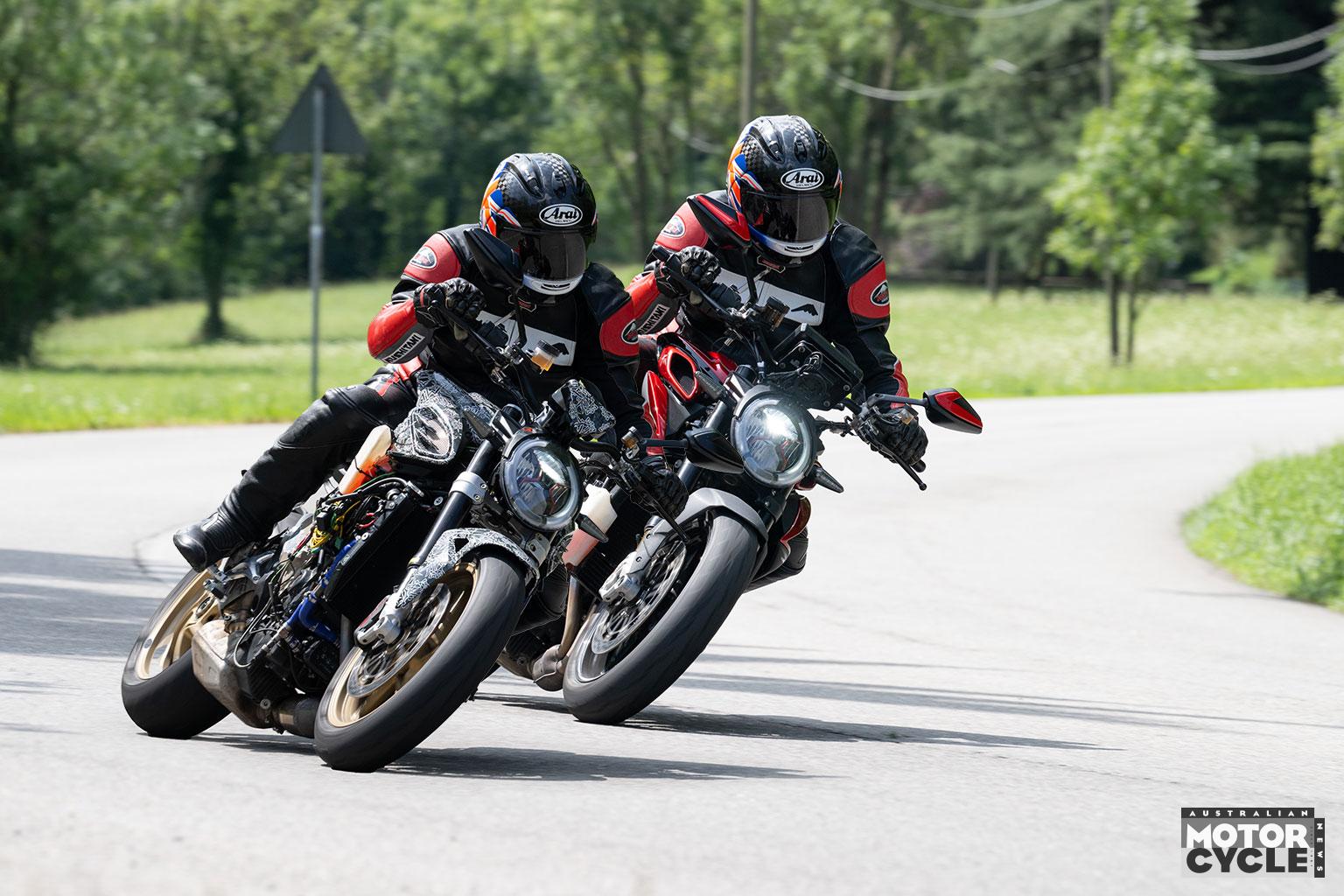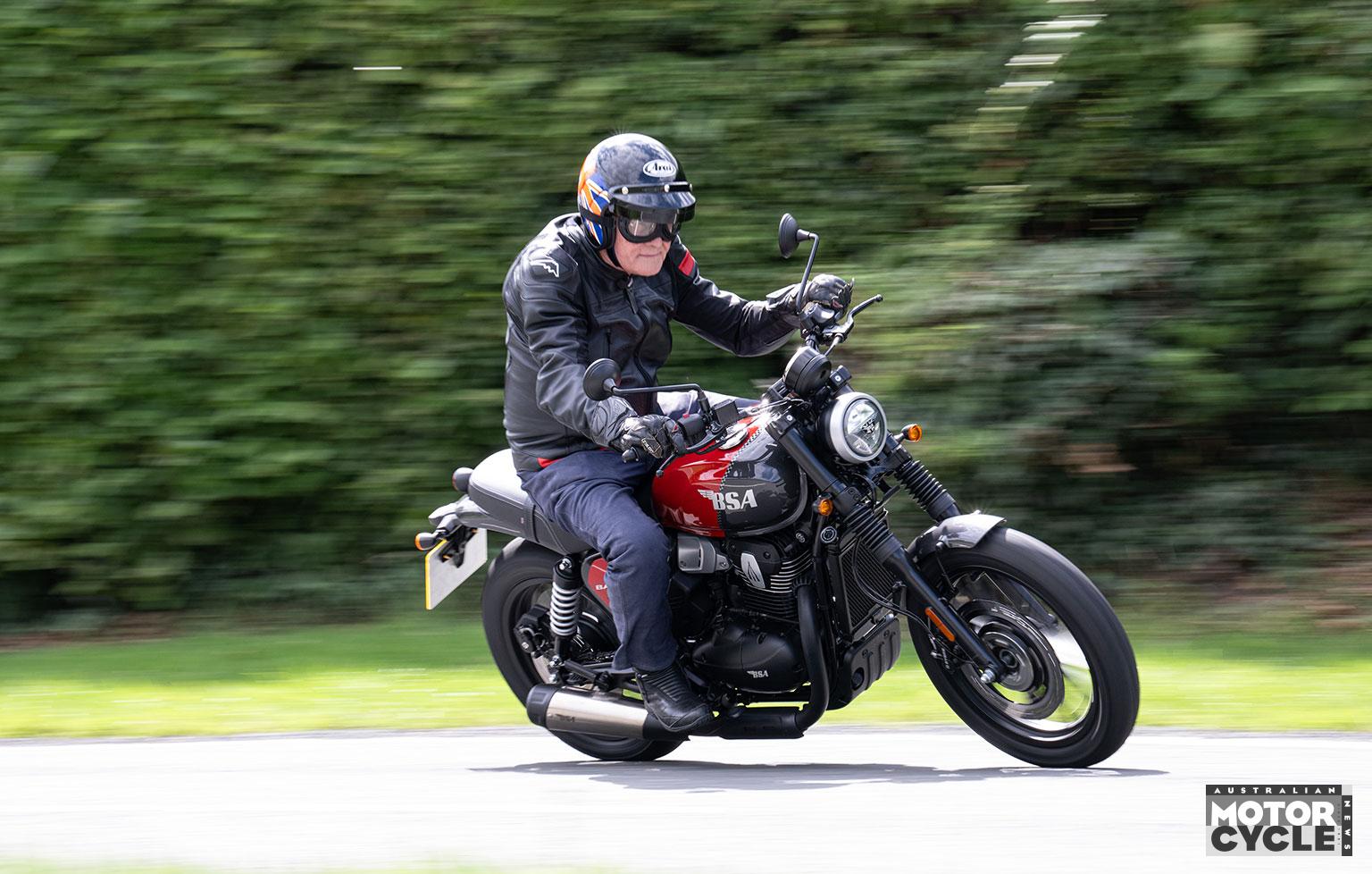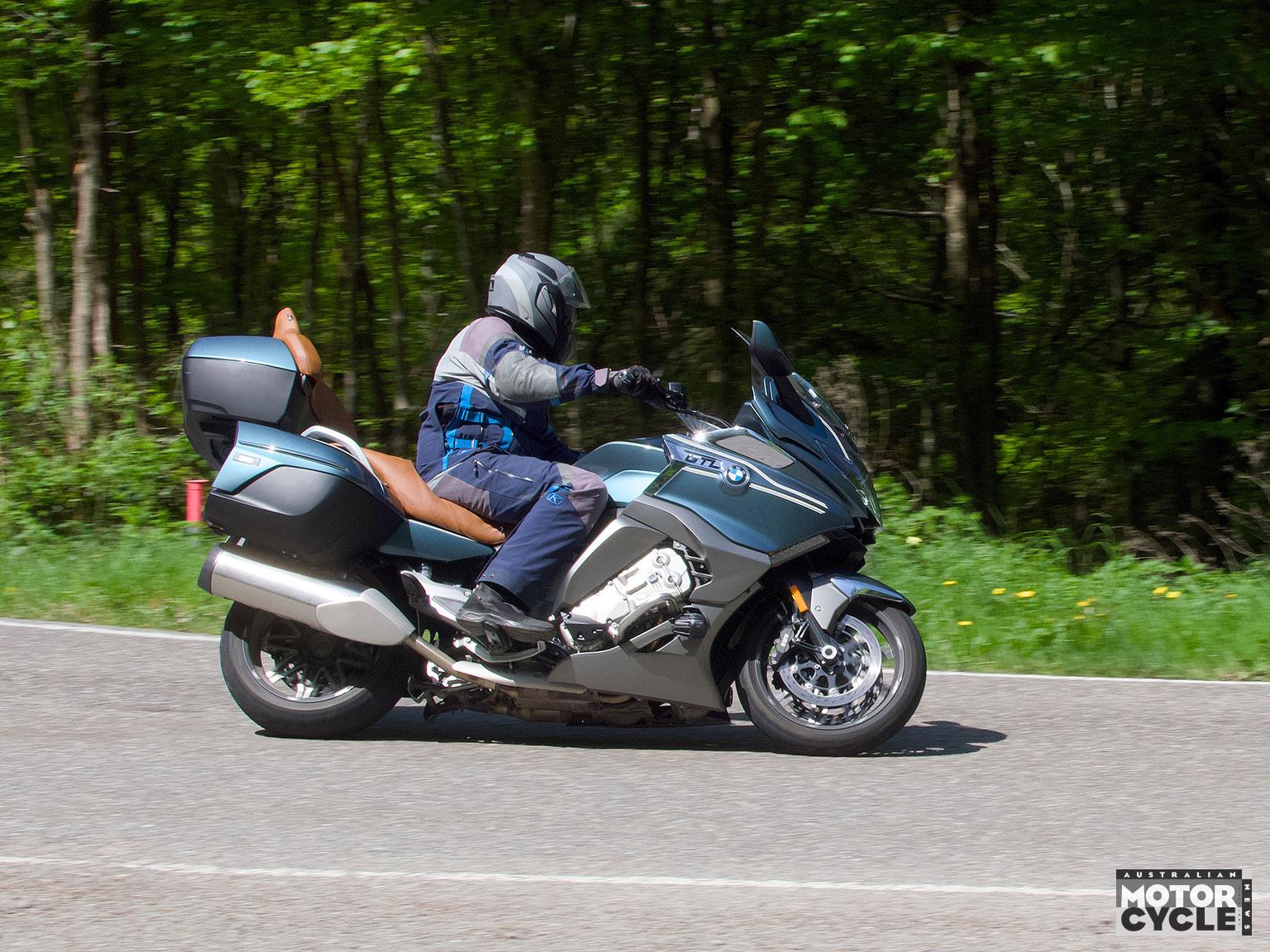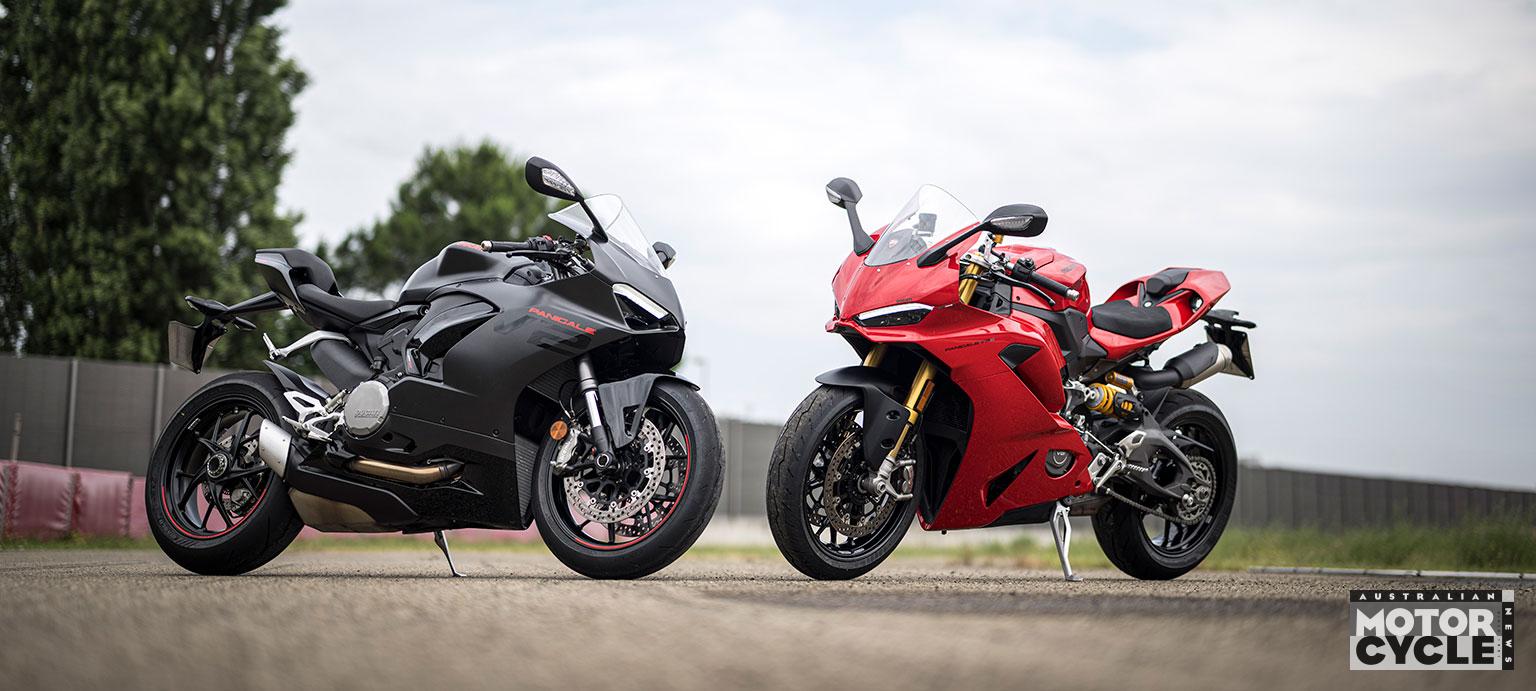The Ducati Scrambler Full Power was playing mind games with me with me. You know what it’s like when you have a bike in your garage and you find it hard to focus because all you want to do is ride it? Far from the most powerful or best handling bike I have tested in recent months, when it comes to the pure joy of riding, the Ducati Scrambler Full Power is right up there. Whether it’s a blast up a favourite mountain or just a quick run down to the servo to pick up a carton of milk, the Scrambler is a bike you want to jump on every time… and then take the long way home.
Small and light, the Scrambler is almost as easy to push around the garage as a bicycle. But throw a leg over the narrow seat, reach for the wide handlebar and hit the starter, and you soon know this thing means business. At first the Desmodue 803cc air-cooled L-twin is reluctant to lumber into life; it’s almost as though the battery barely has enough juice to crank the engine over, but when it eventually fires up, there’s a satisfying bark from the stubby little Termignoni silencer that just begs you to blip the throttle… over and over.

The Scrambler is no high-end, super high-tech machine like so many others in the Ducati range. In fact it could be described as the simplest of all Ducatis, and it is certainly most affordable, with the base-spec model starting at $18,200 ride away, and this Full Throttle variant selling for $20,300, but that doesn’t mean it’s been stripped of all modern rider aids. Standard kit includes Bosch cornering ABS and cornering TC, and the Full Power model tested here also scores a two-way quickshifter and that Termignoni muffler, along with a host of aesthetic enhancements including a big ‘62’ on the side plates to commemorate the year the original Ducati Scrambler was launched.
Of course, this modern interpretation of the Scrambler is intended to have a retro look and it achieves that not only through the design of the bodywork but also through the use of the air-cooled Desmodue V-twin engine that has previously seen service in the Hypermotard 796 and the Monster 797. It pumps out a claimed 53.6kW (72hp) at 8250rpm and 65.2Nm at 7000rpm, which might seem like a whimper in this day and age of 200hp/100Nm nakedbikes, but there is still more than enough punch to easily see the front wheel loft skywards when you crack the throttle wide open in first.

For most of this test I ran the Scrambler in Sport mode with the power delivery level set to max and the TC level set for minimal intervention. It took me a while to get used to the late engagement of the clutch on this testbike but once away from standstill there’s good throttle response from low revs and then an immensely enjoyable midrange, with the engine really on song between 6000rpm to 8000rpm. Of course, you could keep revving it to the 9000rpm redline, but power tapers off pretty quick up high so upshifting well before then yields the best results. The six-speed gearbox has a nice spread of ratios and decent shift quality, and the Ducati Quick Shift (DQS) works well both up and down when you’re riding hard, but like many such systems it can be a bit recalcitrant at partial throttle openings.
You might think that the Scrambler’s 18-inch front wheel would slow the steering somewhat but the bike’s light overall weight, steepish head angle and wide handlebar mean not a lot of effort is required to change direction. In fact the Scrambler tips into corners willingly, and once you get your head around the fact the chunky block-pattern Pirelli MT 60 RS tyres offer decent on-road grip, you can crank it right over in corners thanks to an abundance of ground clearance.

Having said that, the front end of the Scrambler doesn’t inspire confidence like, say, a Monster’s does, so rather than late braking into corners and throwing the Scrambler onto its side, a gentler approach is called for; go in a bit easier and then get on the throttle hard out of corners making the most of the engine’s midrange torque and the excellent Bosch cornering TC, which has four tailorable levels of intervention or can be switched off altogether, independent of what ride mode is selected.
The Kayaba suspension is basic by Ducati standards, with a non-adjustable 41mm USD fork up front and a preload adjustable monoshock at the rear, but it works well enough, with controlled fork dive when braking and decent compliance. In a nod to the Scrambler’s potential for playing in the dirt, there’s 150mm of travel at both ends. Although I stuck to the blacktop on this test, it certainly soaked up big bumps without getting upset. Preload adjustment at the rear is made with a C-spanner, but now the shock has been moved to a central position (on the previous model it was on the left side), access to the adjustment collar looks difficult. I left it on the standard setting, which felt well suited to my 76kg plus riding gear.

Once you get the hang of it, toggling between the two ride modes is a simple affair, as is delving deeper into the tailorable settings, with a mode and enter button on the left switchblock (which is also the turn signal button), along with an up-and-down button, and info displayed logically on the Scrambler’s small-ish 4.3-inch colour TFT display. As well as TC intervention, you can select the power mode, play around with the light settings (auto-cancelling turn signals and DRL), select what info is displayed on the main screen and more.
A single 330mm disc up front gripped by an effective radial-mount four-piston Brembo monobloc caliper looks after most of the braking duties. It offers excellent feel at the span-adjustable lever and it never felt wanting. At the rear a single-piston caliper grips a 245mm disc, and it also offers decent performance and feel. That aforementioned cornering ABS keeps everything in check on slippery surfaces.

You sit in a neutral, upright riding position on the Scrambler that is reminiscent of a 1970s dirtbike. After a couple of hours in the saddle, the seat also reminded me of a 1970s dirtbike, and I had to shift my butt around to relieve the ache. If you’re riding solo, there is plenty of room to do this, and taller riders who will be sitting farther back on a wider section of the seat will likely find it more comfortable. Anyway, the 14.5-litre fuel tank is only good for a tad over 250km before the fuel light comes on, so on long rides you will need to stretch your legs every couple of hours.
Although it looks like there’s nothing to hang on to, pillions can actually get a decent grip on the rails under the seat. There aren’t a lot of options for tying a bag onto the back though (although there is model-specific luggage available) so I ran a tankbag on test… but stupidly let one of the securing straps hang down on the right side of the bike when fueling up, which melted on the exposed exhaust header pipe. D’oh!

As this test took place mid-winter, I didn’t have any complaints regarding heat off the air-cooled engine. In fact it was nice to warm my hands when stopped at traffic lights – but I reckon it might get a bit toasty in stop-start traffic in summer. You’d have no such issues on the open road without a fairing or screen to get in the way of airflow, and that wide handlebar ensures you catch plenty of breeze.
When it comes to fit and finish, the Scrambler is a quality bit of kit, from the beautiful welds on the trellis frame to the graphics on the tank, seat and side plates. The headlight looks trick too, especially with the DRL lit up, as do the minute LED indicator housings and the small aluminium engine guard. The 4.3-inch TFT display is on the small side, and some of the info can be difficult to read, but the main stuff like speed, engine revs and mode selected is clear to see. On a practical front, there’s a small amount of storage under the seat and a USB port for device charging.

The low 795mm seat height makes the Scrambler very accessible. For super shorties there’s an optional low seat that drops height to 780mm, while taller riders can go for the optional 810mm raised seat. There are a heap of other accessories too (see sidebar), from luggage options to billet bits and everything in between.
Service intervals are reasonable at 12,000km but that includes valve clearance adjustment for the air-cooled Desmodue, which on the liquid-cooled Testastretta V2 used in the Monster, for example, isn’t required until 30,000km, so factor that into your servicing costs. But hey, you’ll forget about servicing costs every time you throw a leg over the Scrambler. Far from the prettiest bike in Ducati’s range, I still found myself gazing it after every ride simply because I had so much fun riding it.
PROS: Simple and lightweight fun with a capital F! Sounds great, just the right amount of tech and excellent midrange punch.
CONS: Would get a bit warm in summer, the TFT display is on the small side and it has 12,000km valve clearance checks.
THE COMPETITION
DUCATI SCRAMBLER FULL POWER

53.6kW (72hp) and 65.2Nm
176kg (wet)
$20,300 (ride away)
HUSQVARNA SVARTPILEN 801

77kW (103hp) and 87Nm
181kg (wet)
$15,990 (ride away)
TRIUMPH SCRAMBLER 900

47.8kW (64hp) and 80Nm
223kg (wet)
$19,190 (ride away)
CFMOTO 700 CL-X ADVENTURE

55kW (73.7hp) and 68NM
204kg (wet)
$11,490 (ride away)
GEARED TO GO
The accessories list for the Scrambler Full Power is extensive…
LUGGAGE
Soft side panniers $372.84
Brackets for soft side bags $373.75
Urban Enduro rear bag $247.73
Classic side panniers $505.74
Handlebar bag $142.70
Soft tank bag $498.32
Top case subframe $634.24
Aluminium top case $793.45
EXHAUST
Complete exhaust assembly $4525.66
Racing silencer $3394.25
Side body panel $113.26
HANDGRIPS
Heated handgrips $529.84
LEVERS
Clutch lever $358.02
Brake lever $358.02
MIRRORS
Aluminium mirrors From $275.22 (ea)
Handlebar mirrors From $204.75 (ea)
TECH
Navigation software $121.19
Multimedia system $499.41
OTHER KIT
Tank protector $52.57
Lowered seat $430.38
Raised seat $543.63
Rear plastic fibre mudguard $226.51
Spoked rims $2305.78
High numberplate support $611.58
Touring screen $566.28
Aluminium oil-cooler guard $181.21
Sport headlight fairing $294.47
Base plate for stand $16.05
Scrambler indoor bike cover $301.05
BILLET BITS
Tank cap $498.46
Footpegs $126.15
Handlebar weights From $103.22
Oil filler plug $91.47
Brake and clutch
Master cylinder covers $332.73
SPECIFICATIONS

ENGINE
Capacity 803cc
Type 90° V-twin, Desmodromic, 2 valves per cylinder
Bore & stroke 88 x 66mm
Compression ratio 11.1
Cooling Air/oil
Fueling EFI, 50mm throttle body
Transmission Six-speed
Clutch Wet, multi-plate, slipper
Final drive Chain
PERFORMANCE
Power 53.6kW (72hp) @ 8250rpm (claimed)
Torque 65.2Nm @ 7000rpm (claimed)
Top speed 200km/h (est)
Fuel consumption 5.2L/100km (measured)
ELECTRONICS
Type Bosch
Rider aids Cornering ABS, cornering TC
Ride modes Road, Sport
CHASSIS
Frame material Tubular steel
Frame type Trellis
Rake 24°
Trail 108mm
Wheelbase 1449mm
SUSPENSION
Type Kayaba
Front: 41mm USD fork, non-adjustable, 150mm travel
Rear: Monoshock, adjustable preload, 150mm travel
WHEELS & BRAKES
Wheels Cast aluminium
Front: 18 x 3.0
Rear: 17 x 5.5
Tyres Pirelli MT 60 RS
Front: 110/80R18
Rear: 180/55R17
Brakes Nissin
Front: Single 330mm disc, four-piston radial-mount caliper
Rear: Single 245mm disc, single-piston caliper
DIMENSIONS
Weight 176kg (wet)
Seat height 795mm
Width 893mm
Height not given
Length 2103mm
Ground clearance 174mm
Fuel capacity 14.5L
SERVICING & WARRANTY
Servicing First: 1000km
Minor: 12,000km
Major: 12,000km
Warranty Two years, unlimited kilometres
BUSINESS END
Price $20,300 ride away
Colour options Red GP19/Dark Stealth
CONTACT
www.ducati.com











